Many a time it so happens that people fail to get visible results even after ardently practicing yoga. This happens because they fail to understand that yoga is one of the pillars of health. However, the grand palace of health cannot stand only on one pillar.
According to Ayurveda, there are 3 pillars of healthy life – “Aahar” (diet), “Nindra” (sleep) and “Brahmacharya” (healthy conduct). When all the 3 factors are in well in proportion then the result is sound health.
The word “Brahmacharya” literally means Brahma-like conduct. This means that one should have conduct that is in harmony with nature and divinity. Now Brahmacharya manifests in 3 dimensions – physical, mental and spiritual.
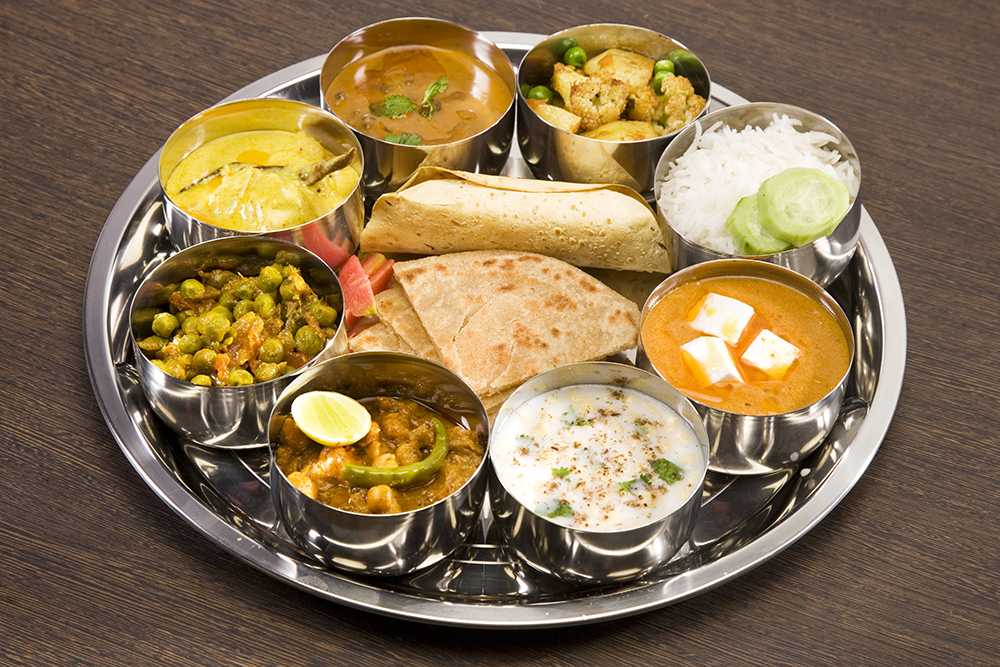
The word yoga means the union. Yoga is the way to achieve Brahmacharya or sync with the divine. Yoga helps a person to develop in all the 3 dimensions – physical, mental and spiritual.
However before one can plan to achieve some kind of physical, mental or spiritual benefit from yoga, one should ensure that he has a foundation of the 3 dimensions.
If a person does not follow the recommendations for a healthy and satvic (pious) diet and peaceful sleep, he will not get the best possible benefits of yoga.
A good quality raw material is the basic requirement for any manufacturing machine to produce a good quality product. Good quality of fuel ensures better performance by the vehicle. Similarly, good quality food procured through virtuous and hard-earned money is essential for a healthy mind and body. In this article, we are going to focus on how we can ensure eating the best meal according to Ayurveda.
Effect of Food on the Mind and Body
According to Ayurveda, the personality of a person can be divided into 3 basic types – Satvic (virtuous), Rajasic (passionate/hot-blooded) and Tamasic (simple-minded/ obtuse). Bhagavad Geeta says that the food desired by each of these personalities is different.
Satvic people prefer fresh, well-cooked, sweet-smelling and easily digestible (mostly vegetarian) food. Rajasic people desire hard to digest, oily, and rich food. Tamasic people choose rotten, foul-smelling food.
The method by which the food is earned also differs according to the personality.

Satvic food is earned through self-less hard work, cooked in divine remembrance with a focus on health. It is consumed with grateful prayers.
Rajasic food is earned with great exertion (hunting, butchery etc.). It is cooked with a focus on taste and appearance. Its consumption is driven by the satisfaction of taste buds. It may cause a hoard of diseases. Therefore it causes a lot of unnecessary effort both before and after eating.
Tamasic food may or may not be earned. It is given as a daily wage, donated, stolen or collected from the garbage. It might be rotten and ill-suited for consumption. For example, excess consumption of opium, marijuana, or alcohol is tamasic. The lives of tamasic people might be shortened.
The food that we eat not only feeds our body but also gives fuel to our mind. Therefore the preferred food for each type of personality helps to sustain their thought process and stability in their self-identity. It is important to choose our food carefully. Especially so for a Yogi, as a healthy body and a tranquil mind is the foundation of yoga.
Perfect Raw Material
According to Ayurveda, healthy food can be cooked only when we have the good quality raw material, for example – fruits, vegetables, grains, etc. Let us look at the definition of good raw material according to Ayurveda.
Ayurveda strictly prohibits the consumption of food grown in a season different from its natural growing season. For example, green vegetables normally grow during the winter season in India. Therefore, one should consume the greens grown in winter only and not otherwise. Ayurveda says that the guna-dharma or the natural constitution and nutrition of the food is derived from the climatic conditions in which it grows. In that case, green vegetables grown in rainy season or mangoes are grown in winter are out of their natural constitution. Such food products are considered to be denatured and should never be consumed. If such food is consumed in raw or cooked form, it is sure to cause diseases. Autoimmune diseases in particular.
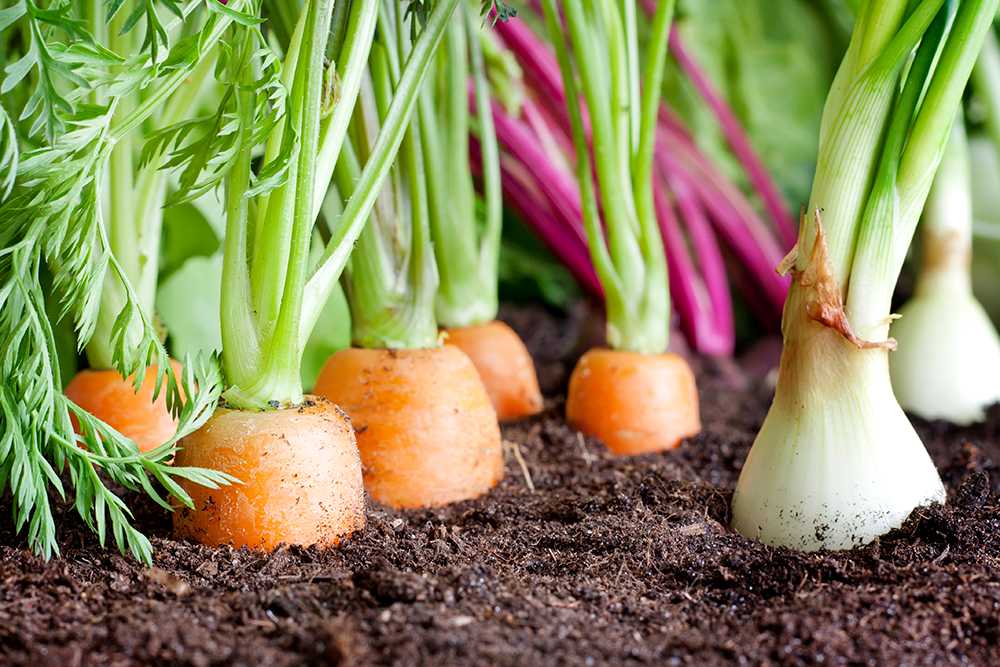
Unfortunately, because of scientific advances, we are able to grow and protect the vegetables, fruits, and grains in the off-season as well. This is possible because of the extensive use of genetically modified seeds, pesticides, insecticides, and fertilizers. The food thus produced is not only denatured, but it is also a form of toxin or a slow poison that we are consuming every day.
What is GMO?
GMO, or genetically modified organisms, are a variety of plant that is produced by artificially introducing some foreign gene inside its genetic constitution. GMOs can survive in adverse climatic conditions, grow in a different variety of soil or become resistant to a certain pest or insect. For example, GMO tomatoes have an anti-freeze gene that is naturally found in the DNA of a fish found in the extremely cold climate of the Arctic Ocean. This protein enables the fish to survive in extremely cold conditions.
One of the major problems that the farmers face during the winters in the western countries is the crop damage caused by the frost. The anti-freeze gene is liberally used to modify the natural genetic constitution of many plants in order to make them resistant to freezing temperatures. Genetically modified plants with anti-freeze genes can sustain extreme cold temperatures without getting damaged. This would seem like one of the great solutions to world food problems. However, the reality is different!
Change in one gene in the DNA leads to a chain reaction that changes the entire DNA significantly. According to the latest research, many GMO foods are linked to a hoard of lifestyle problems and autoimmune disorders, especially the problem of leaking gut.
There has been an obvious increase in the incidents of allergies in the countries where GM food is more frequently used. The rate of cancer occurrence has also increased significantly in the past few decades where GMO food consumption has increased dramatically.
What is Inorganic Food?
When crops are sprayed with all kinds of chemicals, for example, insecticides, pesticides, and artificial fertilizers, then they are called inorganic. These chemicals get absorbed in the plants or stay on their surface. When these plants are consumed by human beings, they can cause multiple serious diseases. Many insecticides disrupt the intestinal linings of the insect’s stomach. These chemicals when ingested through the inorganic food, cause intestinal problems in humans as well.
Ayurveda is an ancient science which was established much before genetically modified food was invented. But, in principle, Ayurveda is against GMO and inorganic food as it is against anything that grows unnaturally and contains unnatural properties. What grows naturally is the best, according to Ayurveda and of course in a logical sense. Let us consider an example, the human baby has a gestation period of 9 months. What if the period is shortened and the baby is taken out of the womb after 6 months or what if the hands of the baby are replaced by the legs. These are very radical examples; however, genetically modified food is not something that is supported by nature. In nature, any pregnancy where the fetus is abnormal or genetically defected is aborted naturally. Similarly, in the case of genetically modified food, the seeds obtained from the GMO crops are infertile and impotent to produce a future generation. This indicates that these GMO seeds do not suit the criteria of natural selection by nature. And therefore, they are rendered incapable of producing a future generation. Such food is definitely not great for the body.
Everything in nature is a perfect match for each other. They are part of a complex matrix. Each element in nature is well-connected and compatible with each other. However, genetically modified food is like an anomaly, which does not fit anywhere in the natural sequence of life. It causes an imbalance in the human body as well. First, we need to be in harmony with nature. Only then can we think of union with a higher existence. Genetically modified food is definitely not the right food for a Yogi.
Seasonal Food
Genetically modified food can be grown in almost all seasons. However, Ayurveda strictly prohibits non-seasonal food. One should only eat whatever is naturally grown in a particular season.
Local Food
Today, because of global trade, we find exotic varieties of food in every market. Western vegetables like broccoli, shallots, zucchini which are not naturally grown in India are available in the majority of Indian supermarkets. Exotic fruits grown abroad like Australian dragon fruit, Kiwi from New Zealand, and US apples are available across the globe. Ayurveda recommends fruits and vegetables grown locally. The fruits and vegetables that are grown in the same climate as the people consuming them are more compatible to the native population. For example, dates, native to the Arabian Desert provide an immediate and high amount of nutrition to the people even when consumed in a small quantity. It matches the requirements of the native people in the desert where the food sources are scarce. Saffron or keshar is naturally found in the cold Himalayan region. Saffron is hot in temperature so it is naturally suitable for the people living in cold areas like Kashmir. In fact, Kashmiri saffron is considered to be one of the best quality saffron available. However, if a person in south India were to consume a lot of keshar because of its medicinal and aromatic qualities, it might not benefit him. South India is a hot place and South Indians do not need more hot-tempered food items. So nature has provided coconut as a natural beverage for south India. Coconut is perfect for consumption in South India as it has a cooling effect and provides water and electrolytes in a hot climate. What is local, seasonal, organic, and available cheaply and easily, is the best option for you. Nature is uncomplicated and anything that requires a lot of effort is not compatible with nature. Therefore GMO and the inorganic food are not satvic and should be avoided.
Ideal Food Items According to Ayurveda for Everyday Use
We have discussed the type of food that should not be consumed. Now we will discuss some food items that should be consumed on a daily basis.
Ideal foods should have the following qualities:
- It should be easy to cook
- It should be easy to digest
- It should contribute to enhancing the digestive fire
- It should help to balance all the dosha of the body
- It should not cause toxins while getting digested or after absorption.
Following food items possess all the above qualities and therefore Acharya Charak recommends them to be used every day:
- Rice
- Moong Dal (Green gram)
- Crystalized sea salt
- Gooseberry
- Jowar
- Boiled water (pure water)
- Milk
- Ghee
- The meat of land animals found in plains or forests
- Honey
All of these food items can be consumed every day without any problems. They can be consumed uninterrupted for the long term. They can be consumed in all seasons and in all kinds of health conditions (unless advised otherwise by a trained Ayurvedic physician).
These food items can be consumed and easily digested even by a person with a very weak digestive system. Therefore they are highly recommended for recuperative purposes. Many dishes like khichadi (made from Moong Dal and rice) are highly recommended while doing Ayurveda treatment or recuperation.
Let us look at the qualities of all these ingredients so that we can develop a deeper understanding of why they are so beneficial for your health.
Rice
Rice is one of the primary food grains. It is consumed in almost all parts of the world. Rice has a cold temperament and enhances the stamina of the body. It is unctuous in nature and contributes to the general lubrication of the body tissues. It is a natural diuretic and helps to keep blood, skin and the urinary system healthy. Rice is considered very good food for increasing the potency of a person (shukral – one that increases semen).
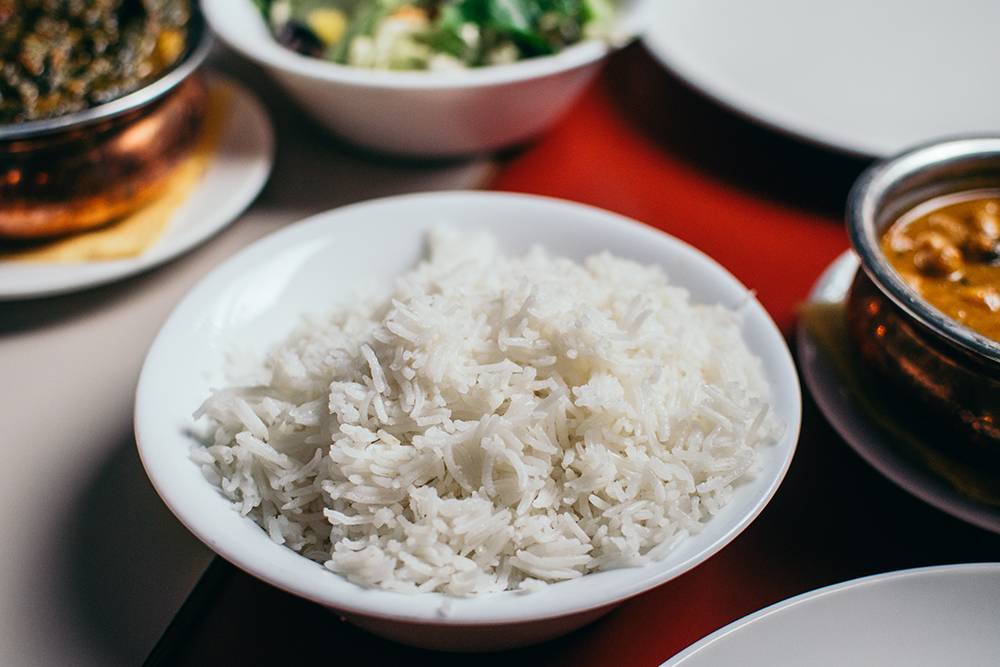
Rice is digested very easily without causing any toxin accumulation in the intestines. It does not cause constipation like wheat flour. It normally does not cause any kind of allergies. Besides, it is good for all the Dhatu (tissue systems) of the body. Therefore one should have rice every day, at least once in a day if not more.
Moong Dal (Green Gram)
According to Ayurveda, Moong Dal is astringent and sweet in taste. It has a dry, cold temperament and is easy to digest because it is light. It helps to balance Kapha and pitta dosha. Moong Dal is the best of all kinds of pulses.
Looking at the above 2 food options, we can safely conclude that ease of digestion is the most important factor in choosing the daily diet. Moong Dal is the easiest to digest among all other pulses. It can cause a little vata vitiation if not used properly (without tempering of hot herbs like mustard, asafoetida). But still, Acharya Charak recommends it as the best of pulses because it is the easiest to digest.
According to recent research, Moong Dal has Antioxidant effects, Antimicrobial activity, anti-inflammatory activity, antidiabetic effects, antihypertensive effects, and antitumor effects. It offers almost everything that an ideal diet constituent can.
Rock Salt / Pink Salt
Ayurveda classifies salt into 5 types – Saidhava, Sauvarchal, Vid, Samudra, and Romak. Out of these 5 types of salts, saidhav salt is considered to be the best. Normally people use Samudra lavan which the sea salt.
Pink salt is better than chemically purified salt as it retains many minerals that give the pink color to the salt. These minerals like sodium, potassium, and calcium are removed in the packaged white salt. All these constituents of the pink salt are essential for our health. Therefore the pink salt is highly recommended to be used every day.
It is important to note that Samudra Lavana or normal sea salt is not recommended. Sea salt is considered to be harsher in nature as compared to the pink salt. However, more research is required for a more informed comparison of the two types of salts.
According to recent research, Pink salt prevents mineralization in the body, as compared to common sea salt. Pink salt offers antioxidant properties. It has a better hydrating effect as compared to common sea salt.
Gooseberry
Indian Gooseberry or Amla is one of the wonder herbs of Ayurveda. According to Ayurveda, Amla is the rare Ayurvedic herb that contains all 5 tastes (sweet, sour, pungent, bitter, and astringent). Here are a few benefits of Amla according to Ayurvedic text:
Amla is said to be Tridoshahar, which means that it can balance all 3 doshas. Amla helps in preventing inflammation in the body. It is a great herb for fever. It’s good for hair, the eyes, the skin, and almost all parts of the body. It is an excellent blood purifier. Amla helps to strengthen the nerves. It provides roughage that aids the digestive system. Amla is hepatoprotective in nature and helps to remove acidity from the alimentary canal. It is also a very good diuretic and helps to prevent diabetes. Amla improves fertility in both males and females. Amla helps to stabilize early pregnancy and prevent miscarriages. Amla is very good for the respiratory system and helps to prevent asthma, bronchitis, tuberculosis, and chronic cough.
There are multiple other benefits of Amla as stated in the Ayurvedic text. Some of these benefits are verified by recent scientific research.
According to one research study, Amla promotes antioxidant activity and increases mitochondrial capacity.
Amla has exhibited anti-carcinogenic activities in the body.
Amla can help to eliminate arsenic-induced immunotoxicity.
Amla has significant anti-glycemic and lipid-lowering properties. It can be a very effective medicine for type 2 diabetes.
Amla has numerous health benefits and it is included in the list of daily consumables.
Jowar (Variety of Sorghum)
According to the Ayurvedic description of Jowar, it is a dry, cool temperament. It is light to digest, and sweet (provides mainly glucose/carbohydrates). Jowar helps to pacify the Kapha dosha. That being said, it can vitiate vata when used improperly. It maintains stability in the metabolism and is considered excellent for developing strength and stamina in the body. Jowar was advisable for manual laborers in earlier times. Jowar is also highly recommended for enhancing milk production in new mothers.
According to recent scientific research, Jowar is proven to have antidiabetic effects. In other research, Jowar also shows antioxidant activities.
Research shows that the inclusion of Jowar in your daily diet can play a significant role in reducing the total cholesterol and triglycerides.
There are many other articles and research papers that underline the need to use Jowar in a daily diet.
Distilled/ Purified Water
According to Ayurveda, one should always consume pure water.
Boiled water is light to digest and helps to boost digestion. According to all the modern research, it is a proven fact that boiling kills bacteria and other pathogens in the water. It is light to digest as the liver needs to do less purification and pathogen elimination when compared to raw water.

Ayurvedic pure water is not only boiled but physically filtered as well in order to remove hard particles. Although boiling removes the pathogens, it is not able to remove the ions and particles in the water. Even with these processes, the ions will still be present. Therefore Ayurveda recommends distillation for complete purification. During the distillation, the water is boiled and water vapors are collected in another vessel through a tube. These water vapors then condense to form pure water.
Distillation removes all kinds of impurities from the water. Distilled water is free from pathogens, excess salts, minerals, and soil impurities. Distilled water should be consumed every day for perfect health.
Milk
According to Ayurveda, milk is compared to the divine nectar. Ayurveda describes 8 types of milk, which can be used in different health or disease conditions. These types are:
- Cow milk
- Buffalo milk
- Camel milk
- Horse milk
- Goat milk
- Sheep milk
- Elephant milk
- Human milk
Out of all the above, cow’s milk is said to be the best because of its medicinal properties and large scale availability for everyone.
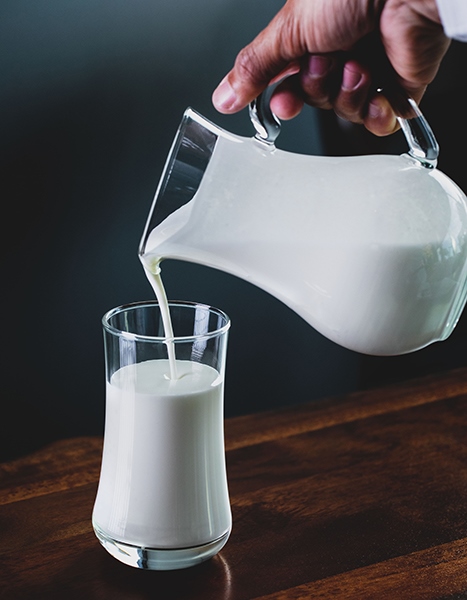
Ayurveda cow’s milk is sweet (full of glucose and carbohydrates) with a cool temperament (Hypothesis – produces endothermic reaction while digestion and absorption in the body cells). It is mild in nature, unctuous, and has a heavy emulsion. Milk is said to bring satisfaction and immediate nourishment to the body. Milk is one of the Rasayana (health supplement or the one that nourishes the body) and helps to rejuvenate the body.
A2 milk vs A1 milk
Not all cow’s milk is nutritious and healthy. Similar to the genetically modified and inorganic vegetables, cow’s milk can be polluted and modified in an unhealthy way.
Because of hybridization of cows, a majority of the milk production today comes from the hybrid variety. The hybrid cows’ milk mainly contains the A1 type of milk, whereas the desi or local, naturally existing breeds of cows have A2 type of protein in their milk.
According to recent research, A1 milk is the chief culprit in many autoimmune disorders as well as causing general inflammation in the body. On the contrary, A2 milk helps to reverse the damage caused by A1 milk and helps the body to attain metabolic stability.
It is interesting that A1 and A2 type of milk is only found in the cows where the hybridization process was conducted. It is also stated that this variation is because of a natural mutation that occurred in European cattle thousands of years ago. Other milks producing mammals have only A2 type of casein protein in their milk.
Organic Milk
The milk obtained from any cow is not safe for human consumption if it contains excess hormones, antibiotics, and inflammation-inducing proteins. Therefore it is important to take all these factors into account before consuming milk from any cow, whether hybrid or desi (original) breeds.
Cattle Feed
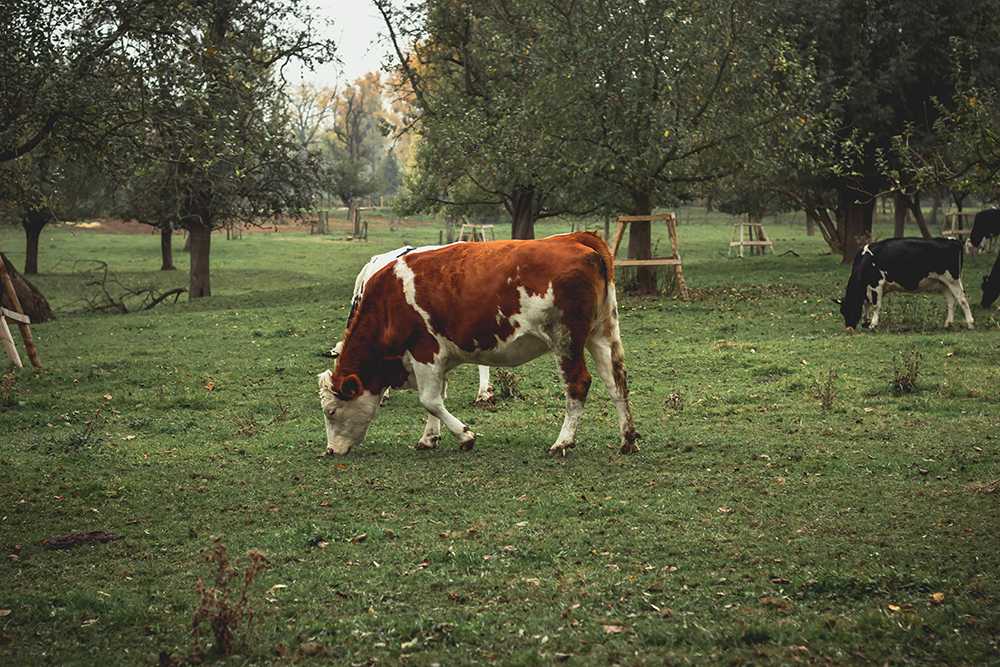
Not only does the variety of the cattle matter but cattle feed also makes a big difference to the quality of milk that is produced. The cow is a vegetarian animal. The natural feed of cows includes grass, hay, vegetables, fruits, and plants. To artificially increase the amount of protein in the cow’s milk, packaged cow feed includes many unhealthy ingredients like genetically modified soybean, corn, eggs, chicken mince etc. These substances cause inflammation in the body of the cow. The same inflammatory effect is passed on to the humans through milk. This might one of the primary reasons why milk has become one of the main sources of allergies. Also, it is proven to aggravate all kinds of autoimmune disorders.
Cattle Lifestyle
In ancient times, dairy farmers or Gopala would take the cows to the farms or the jungles for grazing. There used to be meadows which were meant for cow grazing. Cows would be free to roam around and graze on the best-suited grass or plants. According to Ayurveda, the milk from such cows is light and easier to digest in comparison to the milk of the cows that are kept tied up in one place throughout the day. This is due to the rate of metabolism is faster in the latter.
Use of Artificial Hormones
In order to obtain more milk from the cows, the dairy farmers inject a hormone known as oxytocin. This oxytocin is passed out of the body through milk as well. Oxytocin can trigger hormonal imbalance. Excess oxytocin in the blood can cause serious side-effects.
Use of Antibiotics
In order to protect the cows from various diseases, huge amounts of antibiotics are administered into them. These antibiotics are then passed onto humans when they drink milk. Therefore, if we are drinking milk, we may as well be drinking a dose of antibiotics every day.
The conclusion is that you should consume milk daily. However, you should make sure that the milk is A2 certified and be quality organic. Considering all the above factors, it is advisable not to drink milk at all if it’s not organic. If you have access to organic milk, it should be included in your daily diet.
Ghee
Ghee is one of the most praised food preparations in Ayurveda. According to Ayurveda, the qualities of Ghee are divine.
The qualities of Ghee as described in Charak Samhita are:
It is the preserver of memory and intelligence. It enhances the digestive fire, potency, and ooja (life force/protoplasm) in the body. It also increases mucus and fat in the body.
Ghee eliminates the evil effects of vata and pitta dosha. Ghee is an antidote for many kinds of external poisons and toxins produced in the process of digestion.
Ghee is highly recommended for vata dosha dominant diseases like Unmada (mania), tuberculosis and fever. Ghee is an excellent internal cleanser and rejuvenating agent.
Ghee is considered to be the best of all types of fats. It is cool in temperament and sweet (provides the body with carbohydrates/glucose).
Old Ghee (aged for more than 1 year) is said to be extremely effective in eliminating serious disorders like; intoxication (alcoholism), epilepsy, unconsciousness or fainting episodes, tuberculosis, mania, poisoning, fever, ear-ache, headache, and many more diseases.
According to scientific research, consumption of Ghee does not increase lipid peroxidation processes that are linked to a higher risk of cardiovascular disease. Ghee also offers excellent hepatoprotective effects. Ghee helps to detoxify the liver. One of the research studies found Ghee also offers sedative and anticonvulsant activities. One research study proves that Ghee also has wound-healing properties.
Ghee is rightly called an elixir in Ayurveda. It offers so many health benefits that one should have Ghee every day. It is important to consume it in the right amount. Vedic tradition says “Ati sarvatra varjayeta”, which means excess should be avoided in all cases. One should not consume excess Ghee just because it is good for health. 1 tsp of Ghee per meal is a good amount for a young active person. However, a person who leads a sedentary lifestyle should only consume 1 tsp of Ghee throughout the whole day. A Yogi, who practices yoga regularly, should have 1-2 tsp of Ghee with every meal if possible. Yogic exercises will help him to digest the Ghee. Another very important point to consider is that Ghee should not be consumed if you’re not hungry. If you consume it when you’re not hungry, the Ghee will not get digested properly.
The best time to have Ghee is after sunrise and before sunset. Sun promotes a high rate of metabolism in the body and the heavy food consumed during the daytime is easily digested. This is especially applicable to Ghee as it is pure fat. As per its qualities discussed earlier, Ghee consumed in the night might promote Kapha and heaviness in the body.
Jangalya Mansa (Meat of the Animals inhabiting Forest/Grassland)
Contrary to popular belief, Ayurveda is not against non-vegetarian food. In fact, even the qualities of beef are mentioned in Charak Samhita. According to Ayurveda, beef is extremely dry in nature. It can cause serious vitiation in vata and should be consumed only for certain disorders as a remedy and not otherwise. Prohibition of beef eating is a public health guideline rather than a religious dogma. Hinduism prohibits beef eating in a religious context because religious rituals are easier to comply for the general public than health guidelines.
Jangalya mansa or meat of the animals found in forest or grasslands is recommended by Ayurveda for places where vegetables, fruits or other agricultural products are hard to find. In deserts or Polar Regions, one cannot consume vegetarian products due to non-availability. For survival in such a place, consuming non-vegetarian food for survival is justified and accepted.
According to Ayurveda, vegetarian food is considered to be satvic. This indicates that vegetarian food is light, easy to digest, and non-toxic for the body. All food contains vibrations of different kinds. Vegetarian food is supposed to have positive vibrations, good for the mind and the body. Similarly, non-vegetarian food, when consumed just for the sake of taste, contains very negative and heavy vibrations. However, such food is compatible with rajasic and tamasic types of people. Therefore Ayurveda recommends non-vegetarian food for the aggressive and the dull.
Now, we have a huge variety of animals, for example, Aanoop (aquatic) animals that can also be consumed on a daily basis. Ayurveda recommends only Jangalya animals. Why? Because the level of metabolism of an animal decides the amount of fat and other nutrition that it has in its body. When we eat an animal, we are consuming a very complex structure as compared to the plants. Normally an animal that has a slow metabolism and a sedentary lifestyle has higher amounts of fat in his body. For example, a pig will have huge pockets of fat as compared to a turkey; a turkey might have a higher fat content than a chicken. A fatty animal is sure to load you with unwanted fat and cause you to have more fat on your body.
Let us look at the Jangalya animals – this includes chicken, turkey, goose, goat, sheep, deer, and rabbit. All these animals can move fast or run. They need to support their lifestyle by having a light body and a faster rate of metabolism. They have less fat and are easier to digest. A higher rate of metabolism also ensures that there is less accumulation of toxins in the body.
However, the scene of Jangalya animals is drastically changed today. We have chickens that are supposed to move but stay heaped up in a small cage. We have goats, sheep or cow that are not allowed to graze freely but are huddled up in a small space. These animals are not good to eat anymore. According to Ayurveda,
the one who wants to eat non-vegetarian food today should ensure that she/he consumes animals that are brought up in their natural environment and fed a natural diet. Otherwise, it is far better to stick with even inorganic vegetables than to eat animals fed on inorganic food, antibiotics and hormones. Eating such meat is accepting a problem multiplied many times.
Note: Fish are categorized as Aanoop and not recommended as their metabolism is habituated to a cold climate.
Honey
Honey is another excellent food product recommended by Ayurveda for daily use.
Medicinal properties of honey described by Ayurveda are:
Honey can cause vitiation of vata. It is heavy to digest and cool in temperament, and astringent-sweet in taste. Honey is dry in nature. According to Charak Samhita, it has a property to join/merge or consolidate substances. Honey helps to dissolve fat in the body. It is recommended as a medicine for all kinds of Haemorrhagic disorders and Kapha dosha diseases.

One important factor mentioned in Ayurveda regarding the use of honey is that ideally it should never be heated and then consumed. Raw honey is the best for consumption. Also if the honey is pure, there is no need to heat or sterilize it. Pure honey can stay for decades without rotting. Raw pure honey should be filtered of course, but not heated at all. According to Charak Samhita: Chap-27/246, heated honey is poisonous.
Many people might face the confusion that hot honey should not be consumed, but how about honey heated and cooled afterward? The answer is “No.” Honey should never be heated at all.
Healthy Honey
Due to human intervention, honey has lost its healthful properties. Today, honeybees are given antibiotics and therefore the honey that they produce also contains a huge amount of antibiotics. A teaspoon of honey consumed every day might equate to a low dose antibiotic tablet. This small amount of antibiotic consumption can make us resistant to antibiotics and we might need a very high dose of them when we actually need the healing it offers. It is better to refrain from eating honey at all if you’re consuming polluted honey. All serious honey lovers should only consume organic raw honey.
Honey has recently become a health fad so it is more prevalent in people’s diets. This is the reason for a lot of adulterated or duplicate honey being available on the market today. Artificial honey contains artificial flavors and scents. It is not good for your health.
Because of honey being such a health fad, it is mixed in many packaged foods like corn flakes and honey oats. Normally this honey is heated or dried along with the flakes. Honey loaded products, according to Ayurveda, are toxic for the body as they contain heated honey and should be avoided at all costs.
One clarification is that not all types of honey are bad for your health. Honey is one of the constituents of many Ayurvedic medicines, especially one important health supplement called Chavanprash. Chavanprash is prepared by boiling many herbs for a long duration. However, raw honey is added only after the Chavanprash is ready. It is added after Chavanprash cools off naturally. Raw honey acts as a natural preservative for Chavanprash, apart from adding its medicinal benefits to Chavanprash. Therefore, even when honey is used in various Ayurvedic preparations, it is actually never heated directly or indirectly.
All the above-mentioned food items are must-haves for all Yogis in order to ensure that their yoga practice reaches its physical, mental and spiritual zenith.
Balanced meal according to Ayurveda
6 Rasa Meals
Ayurveda defines 6 types of tastes – Madhura (sweet), Amla (sour), Lavan (salty), Tikta (bitter), Katu (pungent) and Kashaya (astringent). The concept of taste is very elaborate in Ayurveda. The tastes do not affect only the tongue but they also exercise a unique and significant physiological and mental effect. Therefore a taste produces a complete group of synchronized effects on the digestive, muscular, urinary and sensory systems.
Each of the six tastes offers distinct benefits to the body in a physiological and mental dimension. For example – Madhura rasa (sweet taste) gives instant energy as well as a sense of satisfaction to the consumer, tikta (bitter) rasa, can excite the taste buds and helps to combat anorexia. These 6 rasas can help to balance the three doshas (physiological systems) – vata, pitta, and Kapha. Also, they can be detrimental to the dosha harmony if consumed inappropriately. Excess or lack of any taste in the daily diet can lead to multiple disorders in the long run. This concept is very similar to the concept of deficiency diseases.
Ideally, a perfect Ayurveda meal should contain all 6 types of rasa to ensure complete nutrition to the body. Many people misunderstand this idea. They feel that they should have a minimum of of 6 types of food items in their meal to ensure that all the rasas are accommodated. However, it is not so. Besides, we cannot expect Yogis to go for lavish cooking every day.
All the six rasas (tastes) can be accommodated even in a single dish. For example, a simple fruit salad can contain all 6 rasas. This salad can include sweet (mango, banana, coconut), sour (pineapple, orange, lime), salty (black salt/pink salt), tikta (basil leaves, gooseberry), katu (black /white pepper powder), astringent (black berry, gooseberry, pomegranate).
Also, many fruits and vegetables have one taste as dominant and the other taste/tastes as recessive. In this way, one food item can contribute more than one taste. For example, gooseberry has all tastes except salty. Pomegranate is a sweet astringent.
It is quite easy and simple to have a 6 rasa meals every day. It requires only some Ayurvedic knowledge and a little planning.
The proportion of different foods
Three parts of the stomach
Ayurveda says that one should fill only 1/3 of his stomach with solid food. The other one-third should be filled with fluids (Daal, soup, water, buttermilk etc.). The remaining one-third part should be left empty or filled with air. This is also the reason one should never stuff his stomach with food. The stomach is like a rubber bag that mixes and digests the food by rhythmic contraction and expansion. If the food is consumed in accordance with the above rule, the stomach has enough space for contractions and is able to properly mix the digestive juice in the food. But if the stomach is overloaded with food, there is no space for contractions. The digestive process in the stomach becomes very slow and retards the overall digestion. A sluggish digestion produces toxins (ama) as the food decays in the alimentary canal.
Opposite Food Combinations
Another rule regarding the proportion of food items is that the foods should be compatible with one another. They should form a healthy combination for the ease of digestion. They should not be contrary in nature or temperament.
Laghu and guru foods should not be consumed together. For example – Khichadi (rice-green gram plain porridge) should not be consumed along with oily curry and fried puri. Khichadi is a very light food and gets digested very fast. On the other hand, fried food like puri, paratha takes longer to digest. If these two types of foods (light to digest and heavy to digest) are consumed together, one of them will get over-digested. Let us try to understand this concept through the process of cooking. Normally there are some steps in all kinds of cooking. While tempering a dish, you have to put in the oil first, then the spices so they crackle. Then you add the vegetables and grains. Normally, you would add water in the end. But what will happen if this process is reversed? Different food items require a different digestive environment. If two food items with starkly different digestive requirements are consumed together, neither of them is digested properly.
Similar to laghu–guru rule, extremely Ushna (hot temperament) and extremely sheeta (cool temperament) food items also should not be consumed together. For example, an ice-cream should not be consumed directly after a hot chocolate. This drastic change in the internal temperature of the digestive tract slows down the digestive process. Imagine what would happen to boiling food when you pour iced water in it. It will take some time to regain its boiling point. According to food experts, it also spoils the taste of the dish. Therefore one should take care not to expose the digestive system to extreme temperature changes via food or drinks.
Incompatible Food Combinations
Ayurveda has a concept of “virudhaahara”. The Sanskrit word viruddha means the opposite. There are some food items that should not be consumed together as their digestive process is conflicting or they produce toxins when digested together. This information is based on Charak Samhita and has been practiced for thousands of years. However, more scientific evidence is required in order to validate it.
Ayurveda provides a list of contradictory food combinations that should not be consumed. Some of the important ones are:
Milk and Jackfruit – both of these foods are cool temperament and sweet in taste. However, they have a conflicting digestive process and should not be consumed together.
Milk and fish – Milk has sheeta virya (the heat is absorbed while digestion of milk) and the fish is supposed to be ushna virya (excess heat is produced in the digestion of fish, like an exothermic reaction). According to Acharya Charak, because of difference in virya, these two foods form an incompatible combination.
Milk and curd – Milk is laghu (light to digest) and curd/ yogurt is the guru (hard to digest), therefore they should not be consumed together. Half-formed yogurt is also an example of a mixture of milk and yogurt and should not be used for consumption.
Milk and citrus fruits – Milk should not be consumed with fruits like orange, lime, citron, or guava. Milk is sweet in taste and the acidic fruits lead to curdling of the milk. This curdled milk is very hard to digest and produces an excessive amount of toxins.
Ghee and Honey – Equal amount of Ghee and honey, when mixed together, form a kind of poison when digested together. Therefore these two should never be consumed in equal amount. However, they can be safely consumed in an unequal amount, for example in 1:2, 2:1 ratio.
There are many other criteria for incompatible foods in combination with other factors such as; season, location, time of day, and cooking methods. Here are some of the combinations:
- Heated yogurt or heated honey is an example of Sanskara-vairodhik or contradictory cooking method that yields the food inedible.
- Unseasonal rainwater in the desert is an example of Desh-vairodhik or a contradictory location-food combination. Unstable environmental factors might be the cause of such rain and the rainwater thus obtained might contain unnatural and harmful substances.
- Sattu (roasted and spiced Bengal gram powder – traditional Indian food) should not be consumed at night. Sattu is cool in nature. It has such an excellent cooling effect that it is recommended to be consumed in extremely hot and dry weather. It helps the body to cool down. Body metabolism tends to slow down at night and the body temperature is already lowered. When sattu is consumed at night, it further slows down the metabolism. It disturbs the temperature maintenance system of the body and vitiates Kapha dosha. This is an example of Kala-vairodhik or a contradictory time-food combination.
- The concept of incompatible food today also includes many other factors like microwave cooking, use of refrigerator, air conditioner, and packaged food. All of them expose us to the unnatural external and internal environments. For example:
- One should not heat chilled food in a microwave immediately after taking it out from the refrigerator. This drastic change in the temperature of food denatures its natural nutrition. When such food is consumed, this unhealthy effect is carried forward in the human body in the form of toxins. It is better to eat raw vegetables than to eat such food in case you don’t have time to cook or buy fresh food. Ideally, one should take chilled food out of the refrigerator and let it thaw naturally.
- One should refrain from drinking cold water immediately after exposure to extreme heat or harsh sunlight. The temperature management system of the body is adjusted according to the sunlight or heat. If your body is cooling down and you drink cold water, the disturbance caused in metabolism results in multiple diseases.
- Packaged, ready to eat food is stored in extremely cold temperatures. Such storage gradually kills the nutrition in food. Also, according to Ayurveda, dried vegetables or meat should not be consumed as they can seriously vitiate vata dosha.
Foods to Avoid
According to Ayurveda some types of foods should be completely avoided unless advised by an Ayurvedic physician. They include:
- Dried Meat/ Dried Vegetables – Meat or vegetables should not be consumed in a dried form because it is not their natural state of existence. Dried meat/vegetables cause vitiation in vata dosha because of the dryness that they induce in the body. This dryness is caused as they absorb the body’s moisture and fat to regain their natural state inside the body. This dryness can trigger severe problems in the nervous system.
- Lotus roots – normally lotus stem is eaten as a vegetable. However, in some parts of the world, lotus roots are also consumed. Ayurveda prohibits consumption of lotus roots as they are extremely hard to digest and not worth the effort on the part of the body.
- Non-vegetarian diet for the weak – Non-vegetarian food produces strength and stamina in the body. However, it is hard to digest. Therefore a person who is weak in strength, digestion, and overall metabolism should not consume non-vegetarian food. This is similar to the idea that a weak person should not start weight-lifting in order to gain strength. He should start with mild exercises.
Food Items that Should be Consumed in Small Amounts
There are some food items that can be consumed every day or for some duration. However, they should be consumed in a very small quantity. The idea is that you should not get habituated to consume these foods in high volumes. They are:
- Pippali (Long pepper) – Long pepper is a medicinal herb that is used a lot in the Ayurvedic preparations. However, one should not use Pippali on a regular basis or in a large amount. Pippali is light to digest, unctuous and rapid acting. It helps to pacify vata and Kapha dosha. However, as a result of a long-term regular use, Pippali can vitiate all 3 doshas.
- Acids – Harsh acidic food items like lemon juice, vinegar, and soya sauce should not be consumed in large qualities. Heavy consumption of acidic food regularly can cause hair to fall out earlier in life, hair may become grey sooner also. You are more susceptible to skin and blood disorders. Your digestion deteriorates and you accelerate the aging process. Very small quantities of acids used every day are perfect and form a balanced diet.
- Salt – Too much salt is also detrimental to the body. Excessive salt can trigger wasting of muscles and increases the number of toxins in the body. It can have a detrimental effect on the nervous system. It can also result in impotence in the long run. Apart from that, excessive use of salt causes problems induced by excessive use of acids. Salt is an integral part of the daily diet. It adds taste to the food and aids the digestive process. However, one should be careful about the amount of salt used in the meals every day and make sure that it is minimal.
Raw Food vs Cooked Food
There is no significant emphasis on either raw or cooked food in Ayurveda. The first consideration is not the food but the “agni” or the digestive fire. The body constitution, the current state of health, especially the state of the digestive system determines what is best for an individual to eat. And the best suitable food differs from person to person. For example, a Kapha prakrati person will benefit more from warm cooked food as the digestive system of Kapha dominant prakrati is slow as compared to other prakrati types.
Similarly, cool temperament herbs like coriander, vetiver, and mint are good for pitta prakrati people and they don’t need to be cooked. Vata prakrati people have weak digestion as compared to other prakrati; therefore, it is better to have cooked food. According to Ayurveda, raw food is heavier to digest as compared to cooked food.
The best food for Yogi‘s is the food that takes minimum time and energy to digest. At the same time, it should give sufficient energy to the body and produce very little toxins.
According to the ancient scriptures, Yogi‘s should have a satvic diet.
The best option of food for Yogi‘s is “Kanda moola“. Since Yogi‘s in ancient times would spend their time in the solitude of the forest, they would not have easy access to agricultural products like grains, spices, and certain vegetables. Therefore “Kanda” tubers (potatoes, sweet potatoes) and “Moola” roots (carrot, radish, turnip etc.) were prescribed as an ideal food for Yogi‘s. Even today they are considered the most ideal foods for Yogis.
Most of the root vegetables are highly fibrous in nature. They help to keep the intestines clean by providing roughage. They are full of nutrition and don’t have complicated cooking procedures. Many of the Kanda and Moola can be eaten raw, like carrots, radish, and beetroot.
Fruits are another ideal source of nutrition for Yogi‘s. According to Bhagwat Geeta, satvic food is “Madhur” (sweet – produces glucose/carbohydrates after digestion). Most of the fruits are sweet in nature. They provide instant energy. They are full of essential minerals and vitamins. They are easy to digest and generally do not produce any toxins in the body. Fruits also are consumed raw.
Another important food for Yogis is milk as discussed above.
Leafy vegetables that can be eaten raw like spinach, cabbage, lettuce, and cauliflower tax the digestive system and cause significant vata vitiation in the body. In the long term, it can cause arthritis, memory loss, and chronic body pain.
Grains come last in the diet of the Yogis. If a Yogi is performing a special meditation or penance session, it is advisable to refrain from the consumption of grains as they are hard to digest. Anything that is hard to digest is normally regarded as the last option for a Yogi. However, a complete abandonment of grains and other oily and spicy food is not recommended.
Digestion: Key to Perfect Health
Acharya Charak says that digestion is the first and the most important factor in deciding the amount of food that one should eat. All the above-mentioned food items are very healthy. However, if consumed in excess or in an improper manner, they are sure to cause disease too. You should be guided by your digestion. If you don’t feel good after consuming something, you should refrain from eating it. One should always prefer something that suits their digestion. This advice is not based on the sensual desires of the tongue. It does not mean that if one likes ice cream, he/she should eat more of that and leave out the healthier options. It means that the person should eat only 1 bowl of rice if the amount suits her digestion and not more than that. Normally, people ignore multiple warning signs given to us by the body. If we really listen to our body, we will hear what our body is telling us through the discomfort after excess eating or bloating after missing a meal. Ideally, a perfect Ayurvedic diet comes from the conscious decisions of an individual and not from external advice.
The food consumed should preserve and strengthen the digestive process and not weaken it. According to Bhagwat Geeta, Dharma should be preserved, because a dead Dharma destroys the civilization due to its absence. In the same way, digestion should be preserved in the body, because a shattered digestion can destroy the life force due to its absence.
Factors for Perfect Digestion
Matra (Amount)
The proper amount is one of the prime factors for digestion. The amount is a general factor for most people. According to the general rule, and in the context of a perfect digestion, one should eat only the amount of (raw) grains that one can contain in her hands joined together (Anjali/begging hand posture). It might sound weird but it is actually quite logical and scientific. Every person is unique, the shape of his hands and the volume of his Anjali (begging hand posture) is in proportion to his body. It is also a reflection of the capacity of his organs and his food requirements.
This is the reason why daily wagers in ancient times were paid per meal in terms of the amount of grains that they could contain in their hands. That amount was the exact amount required by the body. Also, rice was the grain that was primarily distributed as payment for work. This is because it is easy to digest and does not produce toxins or allergies in the body.
Guna (Temperament/Properties)
The property of the food item is as important as the proper amount. Ayurveda divides food items into two categories – laghu (light to digest) and Guru (hard to digest). According to Acharya Charak, light foods have more of vayu (air) and agni (fire) elements. For example, puffed rice is very light to digest because it is not dense or complex (vayu) and cooked (agni). It is easier to digest than cooked rice and much easier than raw rice. Laghu foods are naturally digestive-friendly foods.
Guru foods have more of matter(earth/prithvi) and fluid(jala) based. They might be compact, hard to penetrate and digest (prithvi) and hardbound with cohesiveness and adhesiveness (jala). Guru food items are naturally taxing for the digestive system.
Therefore, if a Yogi has a choice between laghu and guru food items, he/she should choose the laghu ones and eat a proper amount of the same.
Digestive Capacity
Digestive capacity is a factor relative to body constitution, physiological balance, age, stamina, exercise, seasons, and the presence of diseases. Therefore, digestive capacity is not a static factor. This means that it is not necessary for your digestion to be the same every day. It can change drastically depending on the changes in one or more factors mentioned above. For example, digestion is at its worst in the summer months, whereas it is at its best during the winter months. If you have a common cold; your digestion will be weakened a little as compared to other days when you are healthy. It is important to be observant of these changes and eat accordingly.
For example, you should have very light food during the summer, and heavy food during the winter. You should not continue the same food regime throughout the year. This can be understood by comparing it to driving a motorbike. You have to drive slowly when you are driving on rocky and uneven terrain, however, you can safely indulge in speeding on a one-way road. You have to be aware and drive your body according to the present situation also.
Hunger
Hunger in a person is the true indicator of his digestive capacity. It is important not to overfeed yourself but to get rid of hunger.
Ideally, one should completely refrain from eating when they’re not hungry. Hunger is the indication that all the digestive enzymes are arranged and the stomach is ready for digestion. Eating without hunger is like making your digestive system work overtime without any incentives.
Even when you’re hungry, you should leave the dining table when 10% of the hunger is still there. Stuffing yourself with food is the biggest crime against the digestive system. Ayurveda says that your enzymes and digestive juices can work better when you don’t stuff yourself with food. We can understand it like this – it is better to have extra staff to work on a project. But if the same staff is overloaded with work, both their efficiency and interest will suffer.
Eating when the previous meal is still not completely digested is called Adhyashana. There is a time lag between the completion of digestion and the next hunger pang. This is dependent on the prakrati (body constitution) and the person’s ability to digest food optimally. It is fine to occasionally eat without hunger. However, one should never eat when the previous meal is in the process of digestion. Consider the example of the process of clothes being dyed. What will be the result when you add another color to a batch of clothes already soaked in one color? For a healthy digestive system, it is important not to overload the system and disturb its normal functioning.
Other Factors
- Location is the factor that describes the weather, average temperature, seasonal impact, available food, and lifestyle of the people. For example, food and lifestyle suitable for a hill station are drastically different from what is compatible for someone living in the desert.
- Time of the day when the meal is consumed is extremely important in order to maintain a healthy digestive system. An ideal time to eat food is during the time the sun comes up and during daylight hours. Late night meals are not good for digestion or overall health. Even when eating during the day, one should have a light breakfast, a heavy lunch, and a very light dinner.
- The diet should be decided according to the interest or liking of the person. The idea is that one should choose healthy food options which are palatable also. If one consumes food that is not appealing to the eyes, nose, or taste buds, the desire to eat starts to wane and can cause anorexia. Therefore food that is technically healthy but not tasty is actually not beneficial for the individual.
- We have discussed food combinations that are contraindicated in Ayurveda. However, there are also many food combinations that are highly compatible and recommended. Some food items, when consumed together, can yield magnified health results. Ayurvedic classical medicines are products of such food combinations. For example –a banana with cardamom helps the body to absorb maximum nutrition from the body. Milk should be consumed after eating mango. It is important that mango and milk are not mixed together. However, milk consumed after eating mango helps to prevent skin sores that might erupt from eating mango.
- Consumption of water is an important factor for digestion. One should avoid drinking water immediately before and after having a meal as it lowers the ideal temperature required for proper digestion. A small amount of fluid/water is suggested in the middle of a meal. This liquid helps to prevent overeating. It also provides moisture and lubrication for the proper mixing of the food in the stomach. Warm fluids are a better option than water during a meal. This includes soup, gruel, or gravy. This is especially beneficial for the vata and Kapha prakrati people. Other options are buttermilk, yogurt, lemon water, or plain water. These options are more suitable for pitta prakrati; however, everyone can consume them during the summer season.
Conclusion
The essence of Ayurvedic Diet is simple. Everything that is natural, obtained with ahimsa (non-violence) and satkarma (virtuous acts) is healthy. Everything that does not disturb the natural bio-rhythm of the body is healthy. These laws are perpetual in nature. They are applicable to all races, countries, and civilizations.
In the end, we should remember that our body is the vehicle of the divine soul. According to the Vedic tradition, the food that we eat is like an Aahuti (sacrifice) in the pious yagya (worship ritual) of physical survival. Therefore, for a Yogi, food is nothing less than Samidha (sacrificial contribution). Ayurveda says that food is ultimately converted to the Ooja or the life force. A Yogi should be as careful in choosing, preparing and eating their everyday food as he is regarding his spiritual enlightenment.
Here we have covered some of the important points in the Ayurveda diet, suitable for a Yogi. However, a mind in sync with the providence is the best guide for making the final decision on what you put in your body. Join us now and embark on a life-changing journey towards holistic well-being.
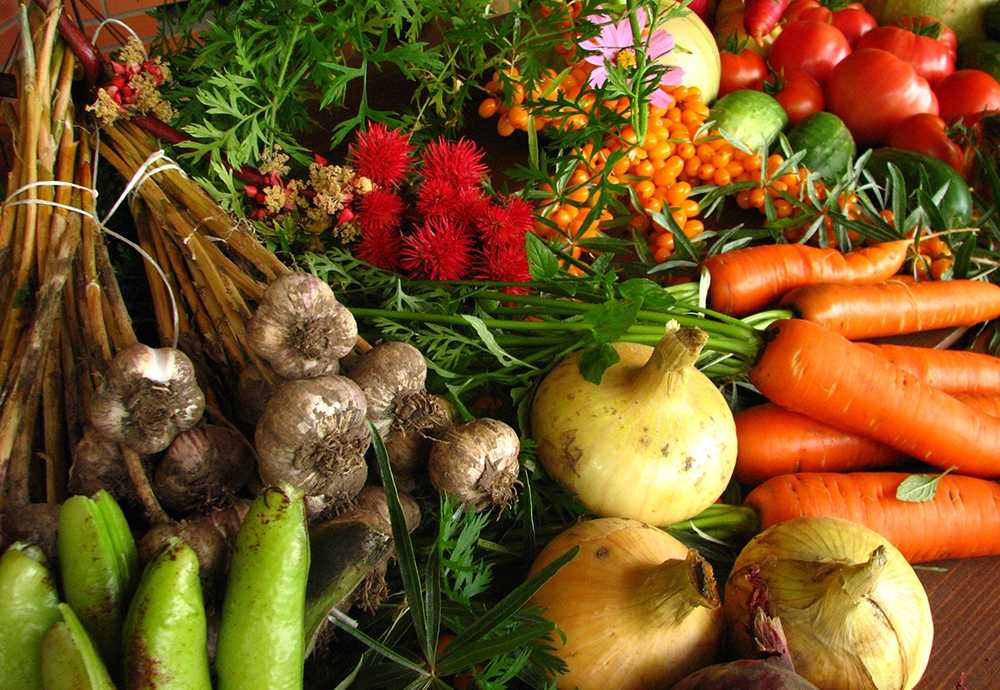
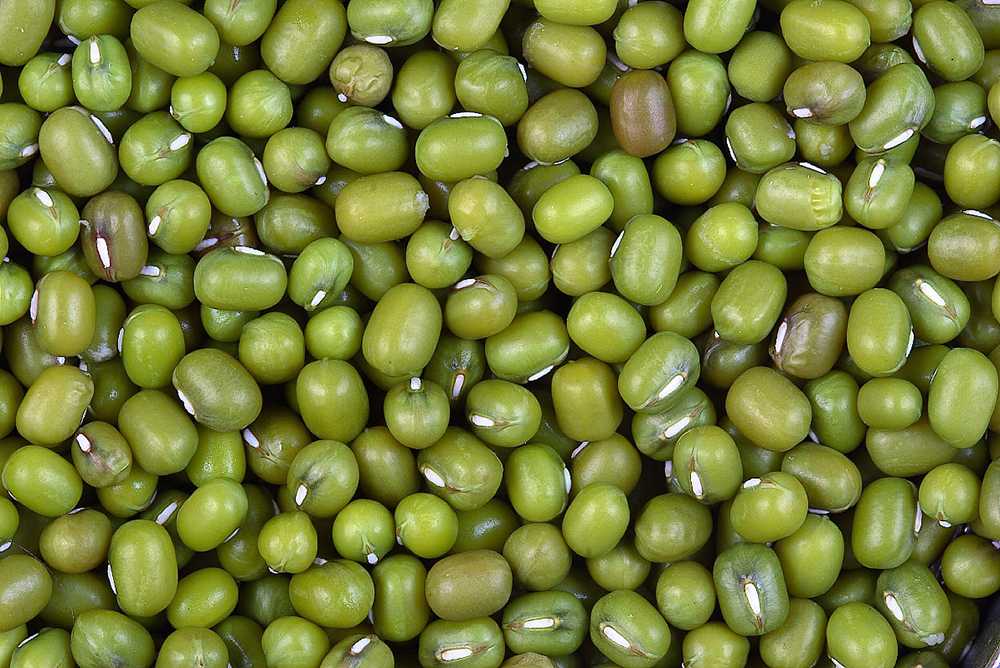
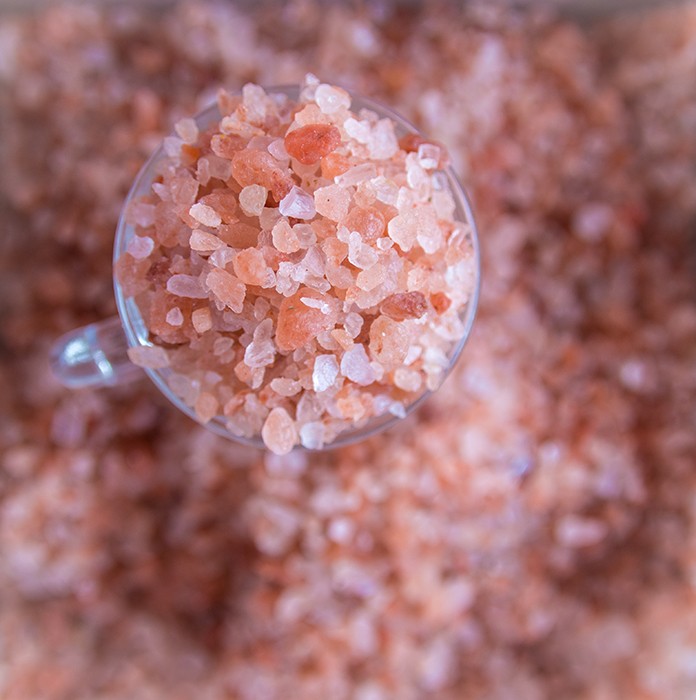

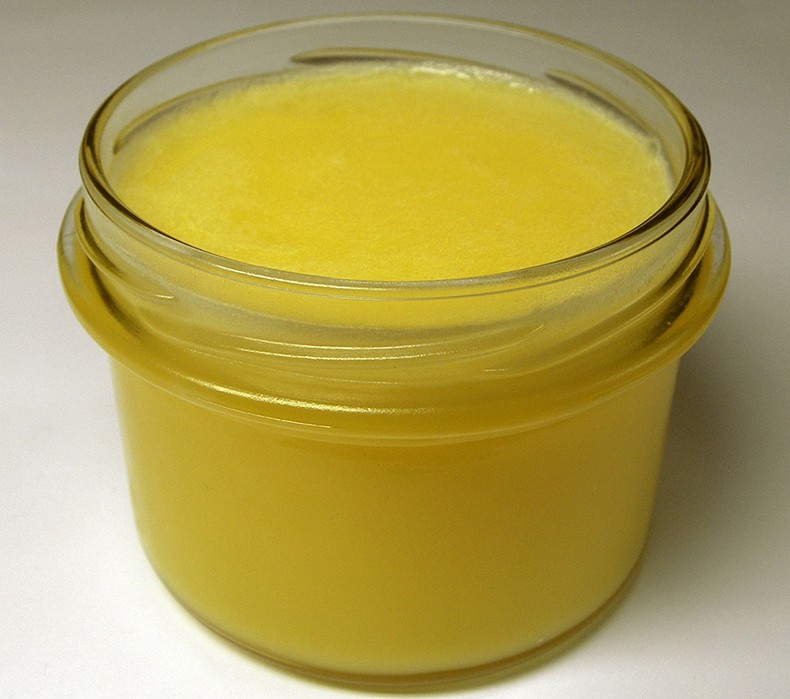

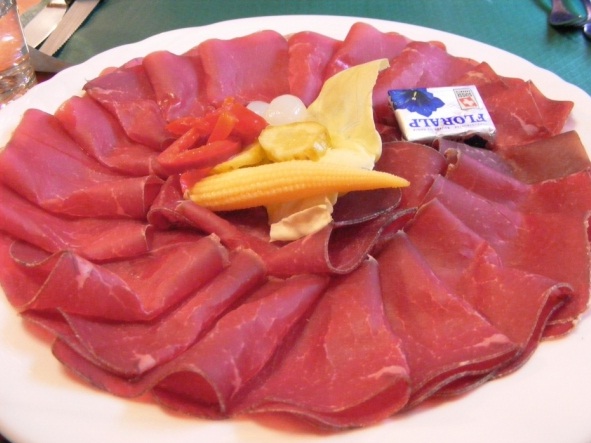
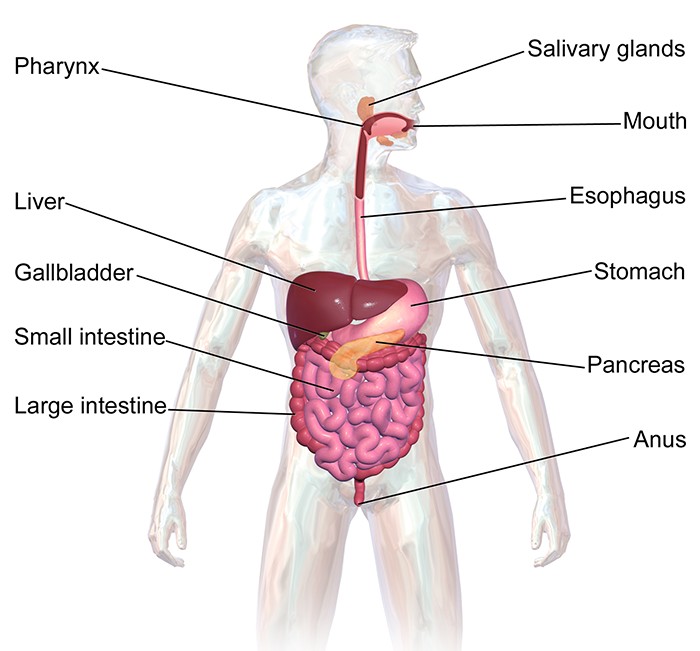
Thank you for your wonderful article ! It becomes more and more difficult to find healthy foods in our modern life with processed foods and unhealthy foods being advertised and sold everywhere while good foods that did not grow in a polluted or unnatural area is tough to find, but still possible ! Thank you so much for this very complete article ! Marc